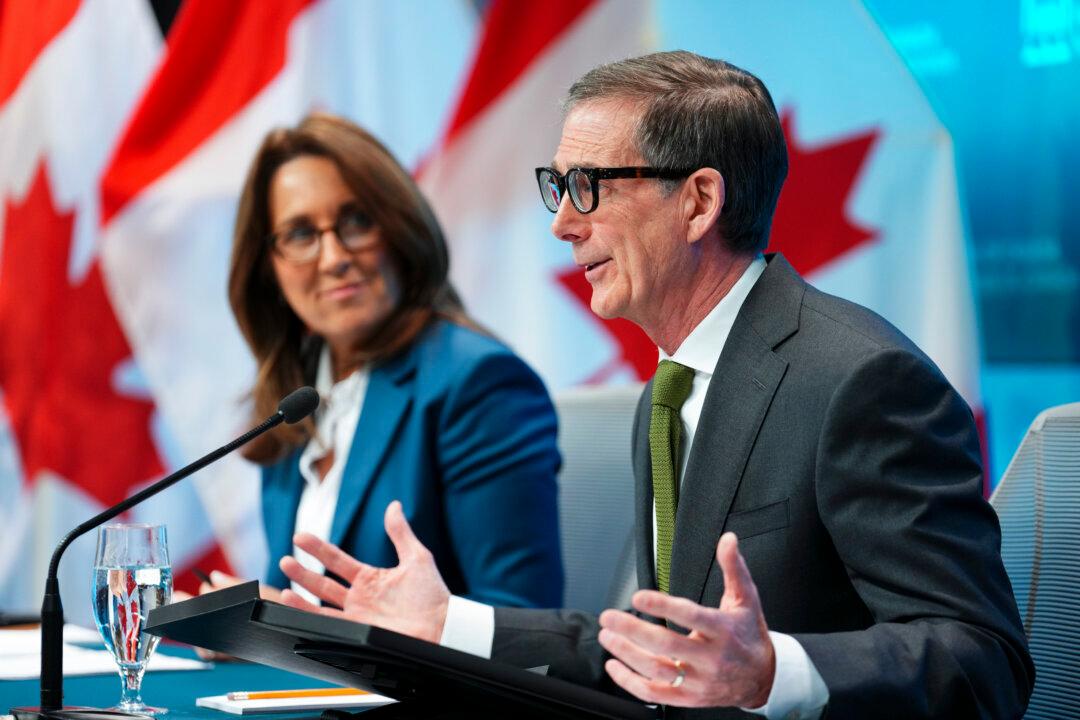As oil and gas investment faces growing scrutiny worldwide, Canada is seen as being particularly vulnerable in its transition to a lower carbon footprint. Nevertheless, its industry says it still has a vital role to play as investments appear likely to start shifting away from new fossil fuel projects in favour of research and innovation targeted at cutting emissions.
“CAPP encourages any groups who are redefining their investment portfolios to consider that investment in Canadian energy is a sustainable choice,” said Tim McMillan, president and CEO of Canadian Association of Petroleum Producers (CAPP) in an email to The Epoch Times.
To try to reach ambitious emissions reductions goals, analysts say Canada will have to undergo a tumultuous transition fraught with economic and societal risks, and investment in the energy space can’t afford to dry up.
The energy sector is a natural target for greenhouse gas (GHG) emissions reduction, as it accounts for over 25 percent of Canada’s emissions. But the industry also contributes 10 percent of Canada’s economy.
The Liberal government has committed to net-zero emissions by 2050, and at the April 22 Leaders Summit on Climate, Prime Minister Justin Trudeau announced that Canada will aim for a loftier target for 2030—to cut emissions by 40–45 percent, instead of 30 percent, below 2005 levels by that year.
On a page dedicated to the “industry’s climate commitment,” CAPP said it will continue working with governments to meet emission-lowering targets. It sees an opportunity for the industry to contribute its expertise in both science and technology. However, to meet the challenge, “considerable investment in technology and innovation at scale will be needed,” the association said.
The potential impact on workers is significant. Roughly 600,000 Canadians are employed in the oil and gas sector either directly or indirectly, and the transition to a low-carbon economy for Canada “could displace between 312,000 and 450,000 [of those] workers over the next three decades,” according to TD Securities.
‘No New Oil and Natural Gas Fields Are Needed’
Energy sector spending should be increased and reprioritized to focus solely on research and development, says an International Energy Agency (IEA) study, released on May 18, that posited a road map to net zero by 2050.
According to the road map, the IEA sees total annual energy investment globally surging to US$5 trillion by 2030, with none of it involving new fossil fuel supply projects.
“No new oil and natural gas fields are needed in the net zero pathway, and supplies become increasingly concentrated in a small number of low-cost producers,” said the IEA in a news release.
The IEA forecasts OPEC’s share of a much smaller global oil supply to grow from about 37 percent in recent years to 52 percent in 2050—the highest of any point in the history of oil markets.
And getting to net zero will require a lot of capital, RBC senior VP John Stackhouse said on the ARC Energy Ideas April 27 podcast.
Stackhouse said RBC sees a lot of good financing opportunities in the oil and gas sector as part of the bank’s sustainable finance program, which incorporates environmental, social, and governance (ESG) factors into investment decisions.
RBC’s view is to “ensure that these funds are going into the productive sectors and that includes oil and gas, that can invest the money in projects and capital and technology that give us a demonstrable reduction in emissions,” he said.
With an accelerated approach to meeting aggressive emissions reduction targets, more and more companies are being asked to do much more than just deliver profits—they are expected to address ESG issues. But with that, Stackhouse said, comes added risk.
“That’s going to take more risk, I think, than a lot of Canadians have thought through. … How do we manage those risks, such as technology not scaling efficiently or not working as predicted?” he said.
“The culture of risk in this country has to change. The culture of risk even in your own bank has to change,” said podcast co-host Peter Tertzakian, deputy director of the ARC Energy Research Institute.





